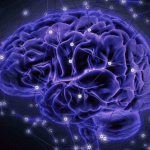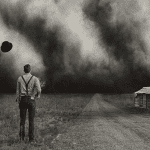 Miscellaneous
Miscellaneous  Miscellaneous
Miscellaneous  Gaming
Gaming 10 Funny Tutorials in Games
 History
History 10 Fascinating Little-Known Events in Mexican History
 Facts
Facts 10 Things You May Not Know about the Statue of Liberty
 Movies and TV
Movies and TV 10 Movie Adaptions That Brought Popular Songs to Life
 Health
Health 10 Miraculous Advances Toward Curing Incurable Diseases
 Miscellaneous
Miscellaneous 10 Undeniable Signs That People’s Views of Mushrooms Are Changing
 Animals
Animals 10 Strange Attempts to Smuggle Animals
 Travel
Travel 10 Natural Rock Formations That Will Make You Do a Double Take
 Movies and TV
Movies and TV 10 Actors Hidden in Your Favorite Movies
 Miscellaneous
Miscellaneous 10 Interesting Things Manufacturers Stopped Making and Why
 Gaming
Gaming 10 Funny Tutorials in Games
 History
History 10 Fascinating Little-Known Events in Mexican History
Who's Behind Listverse?

Jamie Frater
Head Editor
Jamie founded Listverse due to an insatiable desire to share fascinating, obscure, and bizarre facts. He has been a guest speaker on numerous national radio and television stations and is a five time published author.
More About Us Facts
Facts 10 Things You May Not Know about the Statue of Liberty
 Movies and TV
Movies and TV 10 Movie Adaptions That Brought Popular Songs to Life
 Health
Health 10 Miraculous Advances Toward Curing Incurable Diseases
 Miscellaneous
Miscellaneous 10 Undeniable Signs That People’s Views of Mushrooms Are Changing
 Animals
Animals 10 Strange Attempts to Smuggle Animals
 Travel
Travel 10 Natural Rock Formations That Will Make You Do a Double Take
 Movies and TV
Movies and TV 10 Actors Hidden in Your Favorite Movies
10 Terrifying Facts about Human Trafficking
Human trafficking is a horrific crime where victims are forced into labor, sex exploitation, marriages, and even organ donation. It’s the modern-day slave industry, and it is thriving.
Trafficking can affect any person, regardless of gender, age, social status, or location. Let’s explore some of the most terrifying facts about human trafficking.
Related: 10 Terrifying Tales Of Organ Trafficking
10 More Slaves Exists Today Than Ever
According to the latest Global Estimates of Modern Slavery, a staggering 50 million people lived in modern slavery in 2021. Try to wrap your mind around that number!
Twenty-eight million were trapped in forced labor, and 22 million were victims of forced marriages. What’s even more alarming is that the number of people affected has risen significantly in the past five years. Ten million more people were enslaved in 2021 compared to 2016.
Can you believe that? This means that the problem is still growing, and fast.
It doesn’t discriminate based on ethnicity, culture, or religion. Modern slavery knows no boundaries. It’s a global issue affecting people and countries of every status, from the poorest to the richest. These facts paint a grim picture of the world we live in.
9 Human Trafficking Produces 10% of Transplant Organs
Human trafficking is a horrific crime that goes beyond just sex and labor exploitation. Human trafficking for the purpose of harvesting organs is a lesser-known yet lucrative global illicit trade, operating in the shadows and causing devastating consequences for both “donors” and “recipients.”
Organ traffickers thrive in secrecy, profiting from the high demand for organs and taking advantage of vulnerable populations. They mainly operate makeshift operating rooms in houses, but some hide in plain site at reputable hospitals.
An estimated 10% of all organ transplants worldwide involve trafficked organs, with kidneys being the most commonly traded. The World Health Organization reports that over 10,000 kidneys are traded on the black market annually—that’s more than one kidney every hour.
To make matters worse, organ traffickers use shell companies and public websites to mask their activities. Despite generating billions of dollars annually, it remains challenging to detect.
8 Modern Slaves Costs $90 on Average Worldwide
Back in 1850, an average enslaved person in America was worth $40,000. Today, the average cost of a slave worldwide is shockingly low. Yes, there are slaves sold for thousands of dollars, but the average is just $90.
Human traffickers view people as mere commodities. Ludwig “Tarzan” Fainberg, a convicted trafficker, shamelessly stated, “You can buy a woman for $10,000 and make your money back in a week if she is pretty and young. Then everything else is profit.”
Sadly, detecting signs of slavery is extremely tough. The public needs to be taught the bigger red flags to look for. Here are a few suspicious behaviors that might indicate someone is currently being trafficked.
-
Living with their “employer”
-
You can’t speak to them alone
-
Answers to questions seem scripted or rehearsed
-
The “employer” is holding their ID or other documents
-
Signs of physical abuse
-
Extreme submission or fear of particular people
-
Unpaid or paid very little
-
Under 18 and in prostitution
Being vigilant could be the key to securing another person’s freedom.
7 Human Trafficking Finances Militaries and Creates Soldiers
Violent groups see human trafficking as a direct tactic to achieve their goals. Groups like the Lord’s Resistance Army in central Africa and militias in Libya force victims to fight or otherwise support their operations. Victims are used as soldiers, messengers, cooks, and spies.
In 2009, a Washington Times article highlighted the depravity of human trafficking. The Taliban reportedly purchased children as young as seven to serve as suicide bombers for around $7,000.
Abusive regimes use human trafficking to support their economies and suppress dissent. The North Korean government is estimated to have approximately 100,000 forced laborers working around the world, generating over $500 million annually, successfully mitigating the impact of economic sanctions.
6 Typical “Bad Guys” Aren’t Always Who Use Victims
It’s not always the stereotypical “bad guys” who exploit victims. Even peacekeeping missions and military installations contribute to the proliferation of human trafficking.
A 2018 study revealed a positive correlation between the presence of UN peacekeeping forces and forced prostitution. And Defense Department contractors were uncovered exploiting workers for labor on military bases.
An earlier report published by Amnesty International in 2004 also revealed that the presence of UN and NATO troops in Kosovo fueled the sexual exploitation of women. The people who were supposed to bring safety and security were involved.
While policies may have changed since the reports were published, they highlight a grave misconception. Those with the power to be “knights in shining armor” are not immune to being involved in human trafficking.
5 Many Victims Are Trafficked by Family
When we think of human trafficking, we often imagine strangers preying on innocent victims. But in a significant number of cases, the traffickers are actually members of the victim’s own family.
According to a study by the International Organization for Migration (IOM), about 41% of child trafficking experiences involve family members or caregivers. Many of these victims don’t even realize they are being trafficked.
They may start grooming the victim from a very young age. Shockingly, studies estimate that in approximately 31% of child sex trafficking cases, the trafficker is a family member. For example, one article mentions Gita, who was sold into a brothel by her aunt when she was 10 years old.
Sometimes, this exploitation has been happening for generations, becoming an accepted part of the family dynamic. When others notice the abuse, they choose to ignore it to protect the family’s reputation.
4 Auctions Are Held in Public Places
Human trafficking is a dark stain on society that usually operates in the shadows. But even public spaces aren’t safe as it grows. Auctions where human beings are bought and sold like commodities are taking place in plain sight.
According to the Crown Prosecution Service (CPS), traffickers buy and sell victims immediately upon arrival in the UK. Thousands of men, women, and children are sold publicly each year. According to CPS, one auction was held outside a coffee shop in the arrivals hall at Gatwick Airport, with similar auctions taking place at other airports like Heathrow and Stansted.
It’s not just airports in the UK, though; airports all over the world are trying to fight the human trafficking that happens within their terminals.
3 Human Traffickers Increasingly Want Pregnant Women
It’s a truly horrifying reality that we need to confront. According to Louise Shelley, an expert on human trafficking, this disturbing trend is rising, in large part because of illegal adoption practices.
The majority of the money is divided among the traffickers, doctors, lawyers, border officials, and others. The mothers usually receive far less than what was initially agreed upon. The traffickers justify this by citing expenses incurred throughout the process.
2 Only .04% of Human Trafficking Is Ever Identified
Human trafficking operates like a ghost, so much so that only an estimated 0.04% of cases are even identified. Of those identified, a study revealed that fewer than half of all suspected traffickers in the United States are arrested.
What makes it even harder is most state and local prosecutors fail to recognize the problem. Over 70% of local, state, and county law enforcement agencies view human trafficking as rare or non-existent in their communities, and 68% of them don’t even consider trafficking a problem in their jurisdictions.
Human trafficking may be a hidden horror, but sometimes good things do happen. In 2010, the largest human trafficking case in recent U.S. history shook the nation when Global Horizons Manpower, Inc., a labor-recruiting company, promised 400 immigrants from Thailand high-paying farm work in Hawaii. Once they arrived, their passports were taken, and they were forced into servitude. It took six years for prosecutors to make any arrests and free the immigrants.
1 Victims Don’t Always Want to Leave
Human trafficking is often portrayed as someone being forcibly taken and then being physically threatened and held. This is definitely the case sometimes, but in reality, this isn’t the most common way traffickers control their victims.
Traffickers prey on the vulnerable; they want people who feel isolated and marginalized already. Runaways, refugees, migrants, LGBTQ individuals, people with disabilities, and children are all at an increased risk of being trafficked. In truth, everyone is at risk: men, women, and children.
Understanding the intricate web traffickers use to trap victims is crucial. As I said before, some victims are physically locked away, but most are controlled in much subtler ways. Most traffickers rely on a range of methods to form these invisible chains. Here’s a quick list of some of the most common.
-
Intimidation: Traffickers may show or threaten extreme violence against animals, children, and other victims if they aren’t obeyed.
-
Emotional Abuse: Continual humiliation of the victim makes them feel worthless. They may also feel like they can’t survive without their abusers.
-
Isolation: Isolation through constant moving to new places, lack of basic medical care, and even public accompaniment make the victim feel like no one but the abuser can help them.
-
Psychological Abuse: Victims are often blamed for their situation and told that they chose this. Traffickers will also deny that anything is wrong and that all the bad things that happen result from the victim’s continued poor decisions.
-
Sexual Abuse: Victims are dehumanized and made to feel like objects that only exist to make money. Traffickers will use pregnancy, abortions, or SA to control them.
-
Residency Privileges: Traffickers will take the victim’s ID, visa, and papers or threaten their family with deportation if the victim doesn’t obey them.
-
Economic Abuse: Through debt bondage, traffickers essentially act like loan sharks. They give money to victims only to put insane interest on the repayment so the victims can never buy their freedom.
-
Coercion: The traffickers can threaten victims with almost anything. Physical violence, taking away the drugs they’ve forced the victims to become addicted to, torture, or even taking away clothes or other necessities.
Fear, isolation, guilt, shame, misplaced loyalty, and expert manipulation all play a role in keeping victims from seeking help. Some have been so skillfully manipulated that they don’t even recognize themselves as being under someone else’s control or realize they are being trafficked. It’s truly a terrifying thing to think about.
+ Bonus: Boys and Men Often Aren’t Seen as Victims
Boys and men often go unnoticed when it comes to human trafficking. A Department of Justice-commissioned study revealed that approximately 36% of child trafficking victims were boys.
So, why is it that male victims are often overlooked? The answer lies in the stigma surrounding masculinity and misconceptions about trafficking. Society has labeled boys and young men as “deviants,” seeking quick money and pleasure for decades. Even law enforcement has sometimes failed to recognize the exploitation of boys.
In fact, an ECPAT-USA report shows that officers’ reports state, “Why couldn’t he get away? He’s a boy.” while others believed “Boys are not pimped, and therefore not in need of services.” One officer referred to a 15-year-old male found in a motel trafficking sting as a “sex addict” and to another who was “just doing it for the money.”
Ideas of male strength further exacerbate the issue. Society expects males to fight traffickers, making it difficult for victims to come forward. This attitude shames, damages, and prevents these young men from being properly identified as victims.
Just like their female counterparts, male victims risk not being believed, facing taboos, and enduring misconceptions about their sexual orientation. It’s crucial that we debunk these myths.








